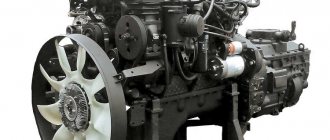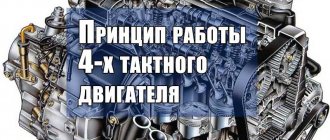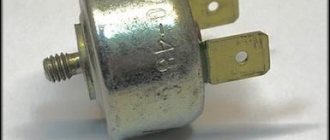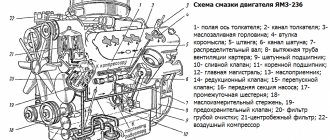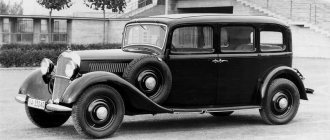A diesel engine is an engine in which the fuel is ignited by heating from compression. A standard diesel engine cannot run on gas fuel because methane has a significantly higher ignition temperature than diesel fuel (diesel fuel - 300-330 C, methane - 650 C), which cannot be achieved at the compression ratios used in diesel engines.
The second reason why a diesel engine cannot operate on gas fuel is the phenomenon of detonation, i.e.
non-standard (explosive combustion of fuel, which occurs when the compression ratio is excessive. For diesel engines, a compression ratio of the fuel-air mixture of 14-22 times is used, a methane engine can have a compression ratio of up to 12-16 times. To transfer a diesel engine to gas engine mode, there is two ways: 1.
Complete modification of the engine to an electric/spark ignition system (modification of the CPG, timing, cylinder head, change in the compression ratio due to possible detonation), where the gas will be ignited by spark plugs. Technical changes will be irreversible and completely exclude the possibility of using D/ T. This is a very expensive change that will require not only the involvement of highly paid professionals, but also complex engineering calculations. This is done extremely rarely in private transport. The most successful examples are only factory-produced gas engines (KAMAZ, Scania, YaMZ, Iveco), which operate only on methane
2.
Modernization of the vehicle by installing additional equipment, after which it becomes possible to use two types of fuel, diesel fuel and gas, the so-called Dual Fuel system or gas diesel. This is the most popular and economically justified method; it does not require permanent changes to the system. Such a car cannot run on gas alone. There are also factory models of gas diesel engines running on methane. For example, VOLVO FH/FM and KamAZ 5490 NEO with a Mercedes-Benz power plant. But such machines have not yet received widespread use.
Two different fuels
As is known, two types of gas fuel are used for internal combustion engines: liquefied hydrocarbon (also known as petroleum) gas or LPG, as well as compressed (i.e. compressed) natural gas or CNG. The first is a propane-butane mixture obtained as a by-product during oil production, and the second consists of 95% methane and is found in nature in its pure form.
There is still a widespread belief among car owners that propane-butane is more convenient to use for transport than methane, but today this turns out to be nothing more than an outdated prejudice. Technical progress does not stand still, and now gas equipment for methane has a slightly larger mass and size of cylinders than propane-butane gas equipment. The price of methane equipment, however, is almost twice as high. However, taking into account the monetary compensation offered by Gazprom Neft (details a little later), it is possible, for the same amount that they will ask for propane gas equipment, to supply equipment for methane - and enjoy all the benefits of driving on natural gas.
Is gas harmful to the engine?
Opponents of the use of gas equipment argue that the influence of gas has a negative impact on the car engine. Piston rings, valves and fuel injectors fail faster because they are not designed to operate at elevated temperatures. This statement is only partly true.
Indeed, the listed parts may become unusable prematurely. However, this is not entirely due to the temperature regime, but to incorrect adjustment of the gas distribution mechanism and improper operation of the car.
Let's look at the harm HBO does to the engine:
- A slight decrease in car dynamics is a consequence of the slow combustion of gas fuel.
- HBO is demanding on the quality of the air mixture, so the air filter will have to be changed a little more often.
- If you notice that gas consumption has increased, check the air filter; most likely it needs to be replaced.
- Sometimes when switching to gas, a reverse pop is observed, but gas equipment has nothing to do with it. This is due to internal combustion engine malfunctions:
- incorrect ignition adjustment, including timing;
- malfunction of ignition system parts.
Savings in everything
In relation to gasoline, the consumption coefficient of the propane-butane mixture is approximately 1.15 - 1.20, while for methane it is equal to 1, i.e. the consumption is the same. At the same time, the price of 1 cubic. m of methane turns out to be approximately 2.5 times lower than the cost of the equivalent 1 liter of AI-95 gasoline.
In addition to direct savings on fuel costs, an important point when using methane is savings on consumables and vehicle maintenance. Among all other types of hydrocarbon fuels (propane-butane, gasoline, diesel fuel), natural gas methane turns out to be the most “friendly” in relation to the engine. The octane number of methane is 120, which is higher than that of any gasoline, due to which natural gas burns evenly and without detonation. Carbon formation in the engine when using methane is also minimal, since, unlike all other types of fuel, natural gas does not have any foreign chemical impurities.
All the advantages of methane are especially evident when operating a car in the urban cycle, with frequent changes in “small-medium” loads, which is precisely what is most “harmful” for the engine. Here, the use of methane allows you to maximize (up to 4 times compared to gasoline) the service life of such an expensive part as a catalytic converter (plus oxygen sensors), and 2-3 times the service life of such typical “consumables” as spark plugs.
Engine oil for gas engines
It should be noted that after switching to gas, experts recommend additionally selecting a suitable motor oil for cars with LPG. The fact is that when working on a mixture of gas and air, the temperature in the combustion chamber is higher.
For a lubricant, this difference is quite significant; some gasoline and universal oils simply cannot cope with such elevated temperatures. As a result, the protection of engine parts and components deteriorates. Also, regular oil when running on gas can cause increased coking of the engine, since the lubricant “burns” from heating, after which a lot of soot and deposits are created.
As a result, the engine cokes, oil consumption increases due to waste, etc. It turns out that after changing the type of fuel, you still need to separately approach the issue of selecting oil. It is optimal to use oils that meet the requirements and recommendations of the internal combustion engine manufacturer for tolerances, but it is also possible to use them in gas engines.
Today, the choice of such products is quite large, so there are no special problems with the selection of motor oil for a gas engine. Such lubricants are offered by leading brands Shell, Motul, domestic Lukoil and other well-known manufacturers.
Safety and ecology
In terms of explosion and fire safety, methane is superior to all types of fuel, being much safer than diesel, gasoline (!!) and even more than propane-butane. Unlike gasoline, methane cannot spill and, evaporating, create explosive vapors (which can also happen if heavy propane-butane leaks). Modern methane gas equipment has a reliable protection system that blocks gas leaks. Moreover, the cylinder itself has a wall thickness designed to withstand a pressure of 200 kgf/cm2, which will prevent an explosion from occurring even in the event of a serious accident. In terms of environmental safety, a methane-powered car is second only to an electric car. Due to its purity and completeness of combustion, natural gas protects not only engines, but also the environment! This is something that we, conscious citizens, should not forget about either.
Benefits of Methane
The main thing is that there are no sulfur and lead compounds, which cause the greatest harm to the atmosphere and human health. Environmental sustainability is one of the globally important reasons for the global methane trend. Opponents of methane often argue that the gas is considered explosive. As for methane, this statement is quite easy to refute using knowledge from the school curriculum. An explosion or ignition requires a mixture of air and fuel in a certain ratio. Methane is lighter than air and cannot form a mixture - it simply disappears. Because of this property and high ignition threshold, methane belongs to the fourth safety class among flammable substances. For comparison, gasoline has the third class, and propane-butane has the second.
Second meal
When installing LPG, you won’t have to part with traditional gasoline “power” forever - gas-cylinder equipment is installed parallel to the standard system. No global technical modifications will be required - only a cylinder and a filling valve will appear in the luggage compartment, and a gas-gasoline switch and a fuel consumption sensor will be installed in the cabin. Also, depending on the equipment, such switching can be carried out automatically.
Prices for methane gas equipment have never been low, since the equipment itself is high-tech and quite high in cost, and the demand for such equipment, which allows the use of inexpensive fuel with consistently standard quality, is also constantly growing. But now it is possible to pay significantly less than the average market price for the installation of methane equipment!
How to avoid the harmful effects of HBO on internal combustion engines
Having considered the positive and negative effects of gas as a fuel, it is possible to save resources and avoid harm to the car engine, but subject to proper settings and following the following recommendations:
- Installation and configuration of gas equipment must be carried out in a service center staffed by trained and qualified specialists;
- Carefully select equipment for your vehicle;
- Timely carry out work related to engine maintenance and replacement of consumables;
- Monitor the correct ignition settings and the quality of the gas mixture;
- Periodically check the tightness of connections of gas cylinder equipment.
Option!
Gazprom Neft continues its “European” campaign, which is currently taking place in St. Petersburg and the Leningrad region, as well as the Novgorod, Smolensk and Tver regions. As part of this project, each car owner is given a discount of 26 thousand rubles on the installation of gas equipment, plus a card is issued with a balance of 4 thousand rubles, which he can spend on refueling his car at Gazprom Neft methane stations. Their number, by the way, will increase in 2014 - in particular, new stations will appear in the North-West region.
By taking advantage of the promotion, you can get significant savings at the very first stage - installing gas equipment. For example, for the owner of a Renault Logan, retrofitting a car with methane gas equipment will cost approximately 27,500 rubles, while without compensation this amount would be 53,500 rubles. Equipment installation time will take from several hours to two days. At the same time, there is a choice of gas equipment from various manufacturers - domestic and foreign, which also makes it possible to save money and allows you to install more expensive and high-quality equipment.
Depending on the manufacturer, the installed equipment has a warranty of 1 to 2 years, while the service life of the gas equipment itself is unlimited. There are also no problems with technical inspection and driving a car abroad: you just need to undergo scheduled tests of cylinders at a car service center - once every five years for metal cylinders and once every three years for composite ones.
Drying a gas engine: fiction or reality
Many drivers are afraid to install gas equipment, faced with the opinion that the valves will burn out after installing gas equipment, since “gas dries out the internal combustion engine.” However, engine drying occurs as a result of incorrect selection of equipment due to the lack of experience of the installers. In addition, some “experts” believe that there is no need to configure anything; there is auto-calibration for this. The result of such unfortunate craftsmen is problems with the engine and disappointment in car owners with gas fuel. We wrote about how to find a competent master here.
Specifications
Main characteristics of the engine of the KamAZ-840 family:
- cylinder diameter - 120 mm;
- piston stroke - 130 mm;
- working volume - 11760 cm³;
- power - 300 hp at 1900 rpm;
- torque - 1225 N/m at 1200-1400 rpm;
- compression ratio - 12;
- fuel consumption - 25-30 m³ of gas per 100 km;
- toxicity standard - Euro-4.
Some modifications of KamAZ trucks are equipped with imported diesel engines adapted to run on methane. The motors meet Euro-5 standards. The plant produces trial models of cars with a Mercedes Benz engine capable of running on both pure diesel fuel and a mixture of diesel fuel and methane.
The gas supply is located in cylinders located behind the cabin (80 l capacity) and on the frame (100 l capacity). The standard equipment includes the installation of 9 small and 7 large containers with a capacity of 1420 liters. The total reserve of methane, compressed to a pressure of 200 atm, is 284 m³.
Main characteristics of gas-cylinder KAMAZ
The motor is here, represented by model 820.60. Vehicle parameters: 7300X2500X2845 mm. The model is equipped with an interaxle differential lock and inter-wheel lock, and has spring lighting installed.
Consumption of this KAMAZ model on methane: 34 l./100 km. (same as 65205) Model price 2,857,220 rub.
All information about Kamaz can be found on our website. This is an overview of the dimensions of Kamaz equipment.
You will learn about the capacity of Kamaz in this article..
It will also be interesting to see the price range for Kamaz.
City Bus 5299-30 on methane gas - characteristics and fuel consumption
Transportation of citizens and guests of the country along narrow city roads is now possible using gas-cylinder semi-low-floor transport.
All-metal body, double doors with pneumatic drive. Rear engine. Ventilation is classic, through opening hatches and molds. 984 l. constitutes the total volume of the fuel system cylinders, it can accommodate 197 m3 of CNG at a force of 200 atm. The semi-low-floor design increases the convenience of getting into and out of the vehicle.
The power unit uses a VOITH D845.3E gearbox. The KAMAZ gas engine is represented by model 820.61. Characteristics of the 5299-30 KAMAZ methane model. Overall dimensions: 11875Х 2050Х 3400 mm. Model price 7,660,000 rub.
For transporting citizens and guests of the country along routes that lead outside the city, class 2 transport 5299-0000011-31, model 5299-011, is suitable. It has seating available, as well as areas that are most suitable for passengers who want to stand.
The bus consists of an all-metal frame, one-piece body. The advantage is its resistance to maintaining the desired air temperature and the rear location of the engine. Ventilation is natural, through open windows and hatches.
Heating system: built-in autonomous and emergency. The first one works from a gas heater, the other one works in addition to the main one. These are the main features of this Kamaz model on methane. Model price 8,708,300 rub.

